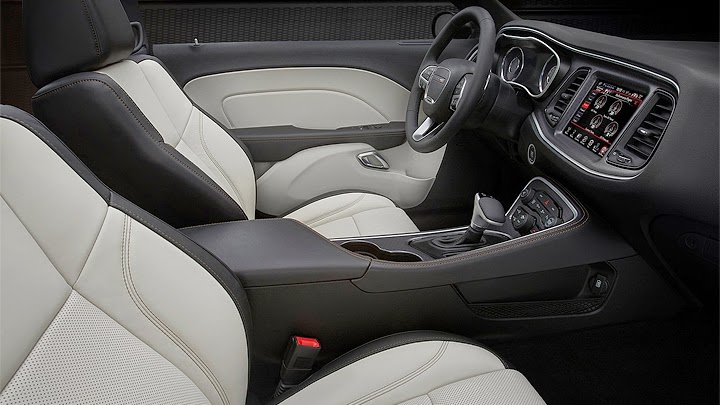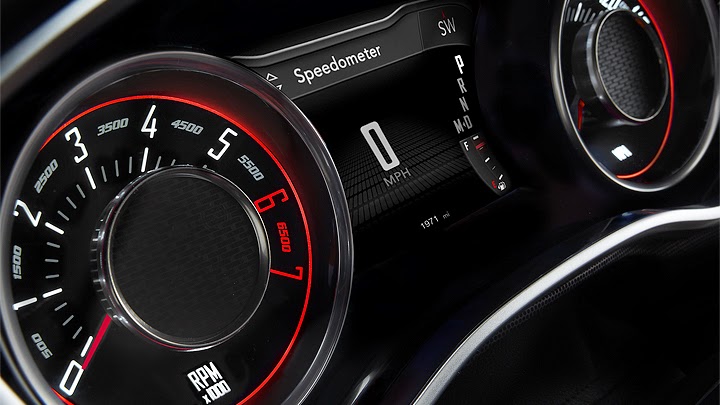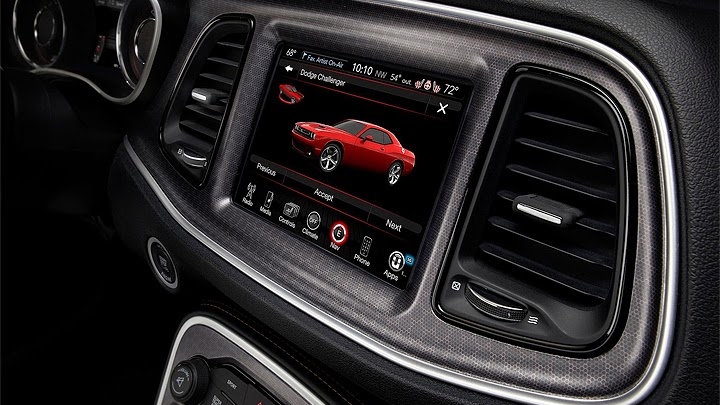
Performing visual updates in cars like these is usually tricky, and the reason for that is their very nature. They try to concile past and present, almost like retro hatchbacks such as Fiat 500, Mini Cooper and Volkswagen Beetle. So if you change too much they end leaving the original proposal, while changing too little makes people start to lose interest for them. This is why most of these cars get facelifts and even new generations looking pretty much the same. Since the modern-day Challenger was debuted in 2006, it was still time to remind of the original car as much as possible, in order to make the public actually consider it a reinterpretation of that one. Eight years later, however, Dodge’s pony car’s reputation became strong enough to allow cutting itself some slack.
Such slack is mostly referred to the cabin, which was completely reinvented for 2015. The dashboard design has caved to the other Dodges’ and now features a two-part console: the lower one includes the climate controls, the gear stick and the cupholders, while the upper creates a visual connection with the instrument cluster. Even more important additions, though, are the high-definition screens: there’s a TFT between tachometer and speedometer, capable of showing programmable information which includes Dodge’s Performance Pages. The other one is the typical 8.4” touchscreen, which commands Chrysler’s UConnect infotainment central. Other news stand for new front seats, whose upholstery choices go from cloth to Nappa leather. Or the optional high-performance set.










Leaving the vehicle enables you to take a deeper look at Challenger’s refreshed exterior. Dodge claims to have taken inspiration from the ‘1971 model, which was its second year. The quadruple headlights now include LED rings around them, the upper split-grille became thinner, and the lower grille became bigger. The rear fascia was redesigned on a similar level, receiving LED tail lights. Car enthusiasts will love additions such as new external colors (B5 Blue, Sublime Green and Tor Red, along with seven stripe options) and a revised hood, which for the first time gets the Shaker option as a standard offer. The latter also brings the Super Track Pack, with upgrades to brakes, steering and suspension and improved tires and stability control.
When it comes to the standard tech specs, Challenger was kept pretty much untouched. The base engine is still a 3.6L V6 capable of 305 hp, which can be upgraded to the 5.7L Hemi V8 and its 375 hp – this one’s best output is achieved with the Shaker improvements, at the R/T trim and paired to the six-speed manual transmission. The top-notch propeller will appear at the SRT trim, and stands for a 6.4L Hemi V8 capable of 470 hp and 470 lb-ft. Both Hemis can come with the TorqueFlite eight-speed automatic gearbox, along with paddle shifters. Mopar already released two Scat Pack accessory packages, one dedicated to performance and the other to appearance. The new Challenger will hit North-American streets in a couple of months.